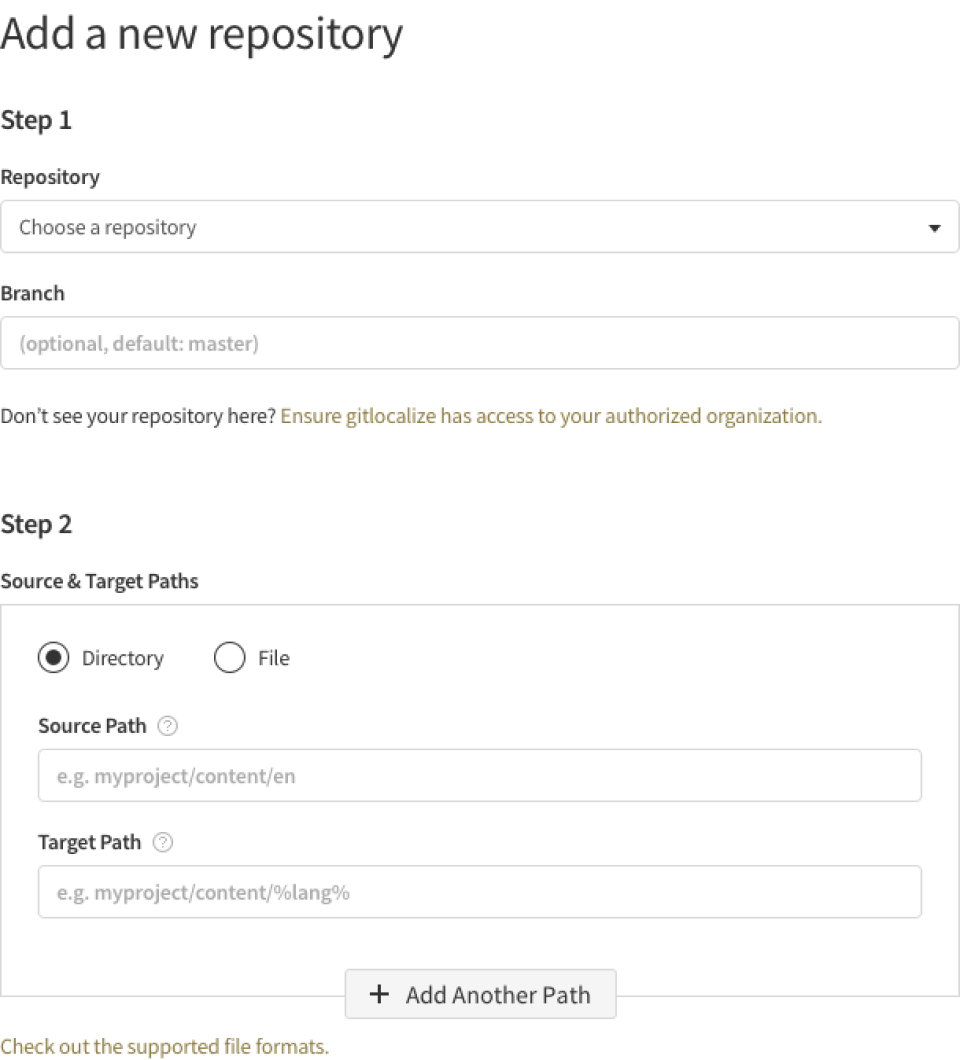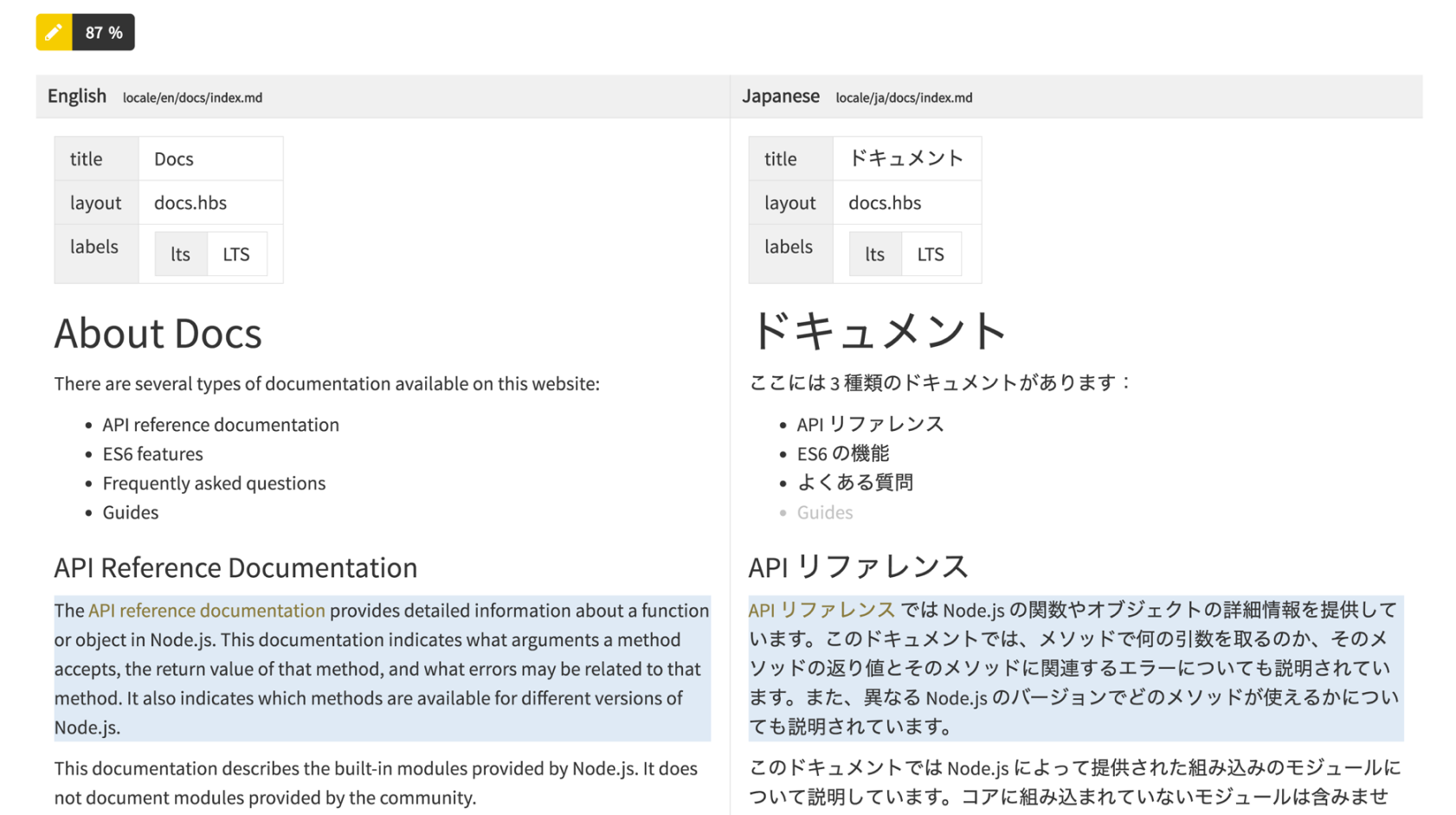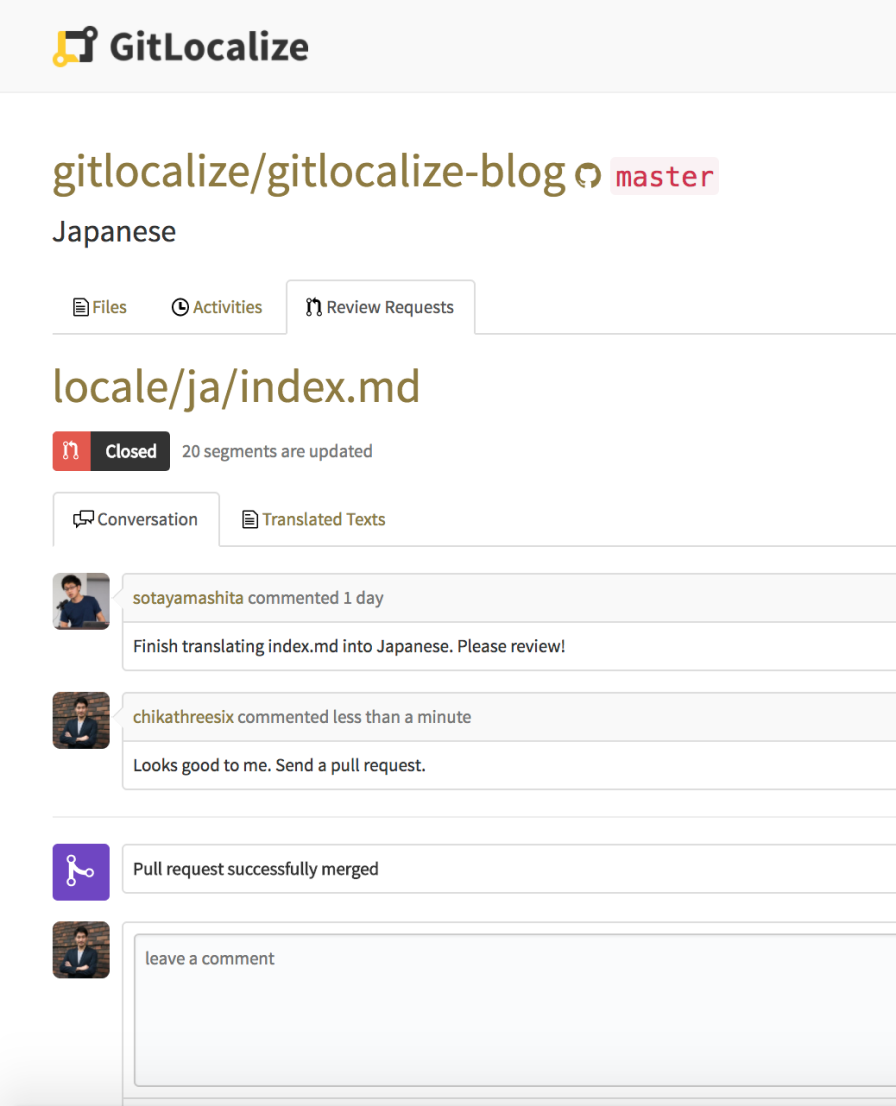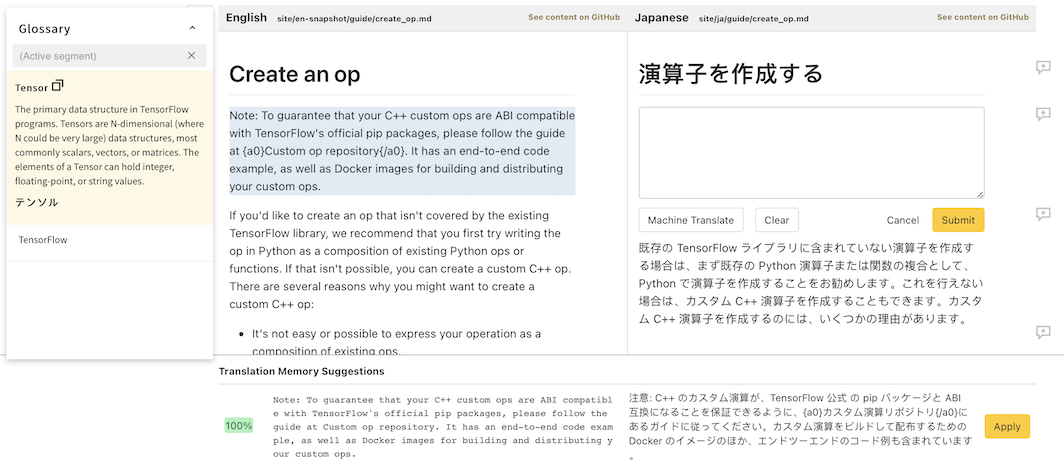Continuous Localization for GitHub Projects
Create sustainable translation workflows with the docs-as-code approach at the core

Features
Here's what makes GitLocalize a great fit for GitHub-based localization projects:

2-Way Sync with the Repository
Your repository is the single source of truth. GitLocalize tracks changes in both the source and translated documents and pulls them into the project. Translations added on GitLocalize are sent to the repository via a pull request.
Have existing translations that need to be imported? No problem! Those will be synced into the project.
Have existing translations that need to be imported? No problem! Those will be synced into the project.
Continuous Translation of Updates
Easily see what parts of your document have been updated and need to be translated again in the side-by-side editor.
GitLocalize parses your files into translatable segments, making it easier to stay on top of updates and keep translations up-to-date.
GitLocalize parses your files into translatable segments, making it easier to stay on top of updates and keep translations up-to-date.


Community, Vendors, and Teamwork
Engage your community, work with in-house translators and vendors, or combine all three to build a sustainable translation pipeline.
Translation Consistency Tools
Ensure the translation style and terminology are consistent by using Translation Memory and Glossaries.
In dynamically updating projects where a lot of text is reused across multiple documents, Translation Memory helps reduce translation costs and turnaround times.
In dynamically updating projects where a lot of text is reused across multiple documents, Translation Memory helps reduce translation costs and turnaround times.

Projects Already Using GitLocalize
Check out some of the awesome public projects that use Gitlocalize:
GoogleChrome/web.dev
Building a better web
Qiskit/platypus
Open-Source Quantum Development
tensorflow/docs-l10n
An Open Source Machine Learning Framework for Everyone
We use GitLocalize to localize our company's WebAPI documentation. GitLocalize is extraordinarily convenient, flexible, and dynamic. We were pleasantly surprised to find that localization takes an extremely short time!
Translations can be managed statically on a file level and also can be compared to the original by segment. This makes managing the work absolutely seamless. We are able to create a consistent translation throughout the entire website with GitLocalize. To say we are impressed is an understatement.
Yuki Iizuka
Val Laboratory
How It Works
We made this short video to demonstrate how GitLocalize works
Create your first project now!